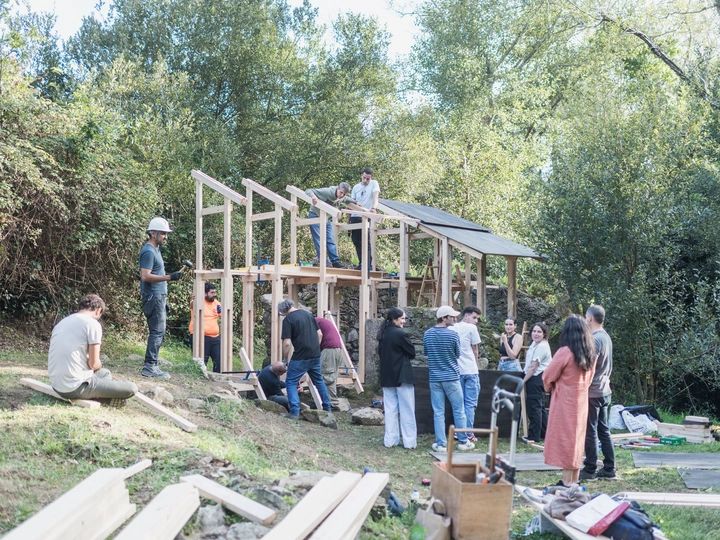Structures of Awareness: Making as a Design Method

Stefano Pugliese
Erazo Pugliese is an architecture and design studio based between Paris and İzmir, led by architects Sebastian Erazo and Stefano Pugliese. Since 2017, we have developed a collaborative practice grounded in making as a design method , using full-scale construction as a tool for learning, civic engagement, and spatial reflection.
Our shared background in furniture-making laid the foundation for our architectural approach: testing ideas through building, scaling up from objects to inhabitable installations. We now create 1:1 spatial structures that emerge from community-driven workshops and respond to context with light, reversible, and resource-aware interventions.
In 2024, we built Vessel for Færderbiennalen (Norway), a 23 sqm timber and textile installation on a protected archaeological site. Designed to evoke movement and memory, Vessel offered a contemplative experience shaped by terrain, wind, and light.
In 2025, we participated in Concéntrico Festival (Spain) with Habitar el Río, a riverside intervention that reactivated a disused concrete dock into a porous threshold between city and river.
Other works include the Observatorio do Nordés, Intervention on a Stone Ruin, and Alpendre, created through public workshops in Galicia and Türkiye. Each structure acts as a civic prototype that continues to evolve through public interaction, often becoming permanent through community adoption.
Our work prioritizes low-tech, climate-aware, collaborative practices. Through LINA, we aim to co-develop spatial formats that build knowledge, activate neglected sites, and offer new models of architectural agency rooted in shared making.
Structures of Awareness evolves from a body of design-build workshops that explore architecture as a civic, material, and collaborative act. Framed by the methodology Making as a Design Method, this project addresses the growing disconnect between architectural practice and the embodied, environmental reality of building.
By constructing 1:1 spatial interventions—timber installations in public or ecologically sensitive contexts—this approach invites participants to learn by making, to engage with place through material, and to reconsider architecture as a shared, ethical practice. Past structures have emerged in natural trails, heritage sites, and civic centers across Türkiye, Spain and Norway, designed to be reversible and respectful of their contexts, yet capable of permanence when embraced by the community.
These installations act as public tools: they reveal overlooked spaces, connect communities to their environments, and establish architecture as a tactile language for care, critique, and coexistence.
Through LINA, we propose to expand this model transnationally via site-specific collaborations and a travelling design-build workshop format. This adaptable method brings participants together on location to collectively design and construct a context-specific 1:1 installation. Each workshop becomes a spatial and social catalyst, rooted in renewable materials, shaped by public interaction, and capable of leaving a lasting, site-responsive architectural trace.
We aim to co-develop a replicable, adaptable format that merges climate-aware design, collective construction, and spatial pedagogy, allowing architecture to become an active framework for environmental and social awareness.